Bathroom Wonder Walls – Part 2
Last month Bathroom Compare focused on three popular choices for bathroom walls in family bathrooms, ensuites, and cloakrooms.
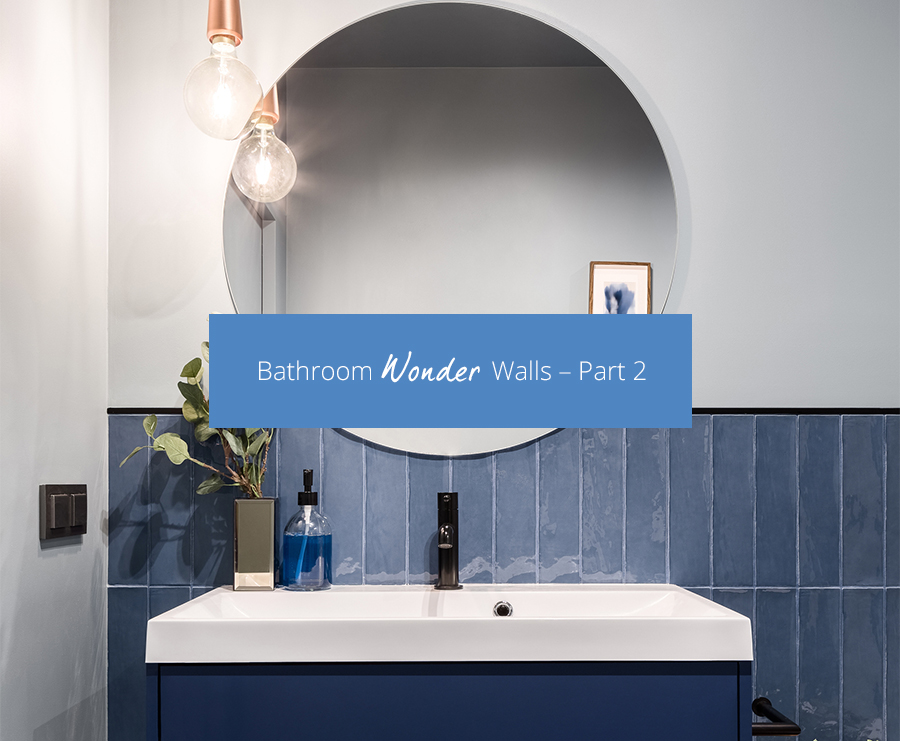
Firstly, paint where finish is as important, if not more important, than colour to ensure that it’s fit for purpose in a wet environment. Bathroom formulated paint with additional mould and mildew inhibiting properties is ideal. Next panelling and shower walls were highlighted as one of the most versatile options – easy to install and keep clean, panelling and shower walls come in a variety of different designs from a stone or tile-look to bespoke photo-generated designs. Finally, and perhaps most surprisingly, wallpaper. Thanks to innovative technology some wallpapers are now classed as waterproof and can be hung in showers or behind baths, others are more water-resistant withstanding the odd splash or two, making it a truly viable option.
Another surface trend worth considering on bathroom walls is the use of composite and other similar materials. Engineered stone, made from quartz crystals mixed with resin binder has a similar appearance to the natural material and can be made to look like granite or marble without the expense attached. In its favour is the fact that it is nonporous, durable, and easy to clean. However, it is very heavy so this needs to be considered before installing so ensure you have the right access, manpower and that the supporting structure can handle it.
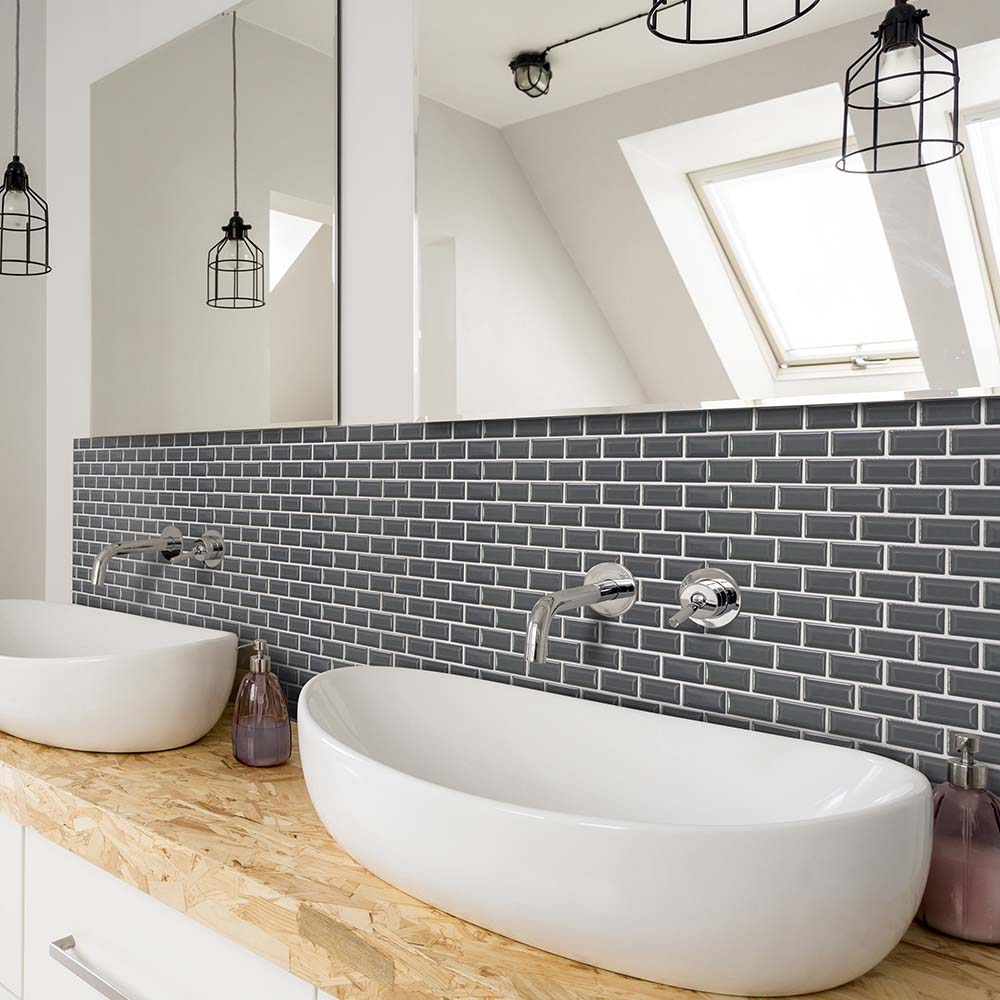
An alternative option to engineered stone is Corian. Often used for worktops in the kitchen, Corian is a blend of natural and synthetic materials, has the same benefits but comes in a wide range of colours and designs and can generally be installed over existing surfaces. It can also be shaped through the process of thermoforming – ideal for a curved shower wall or a non-standard bath panel.
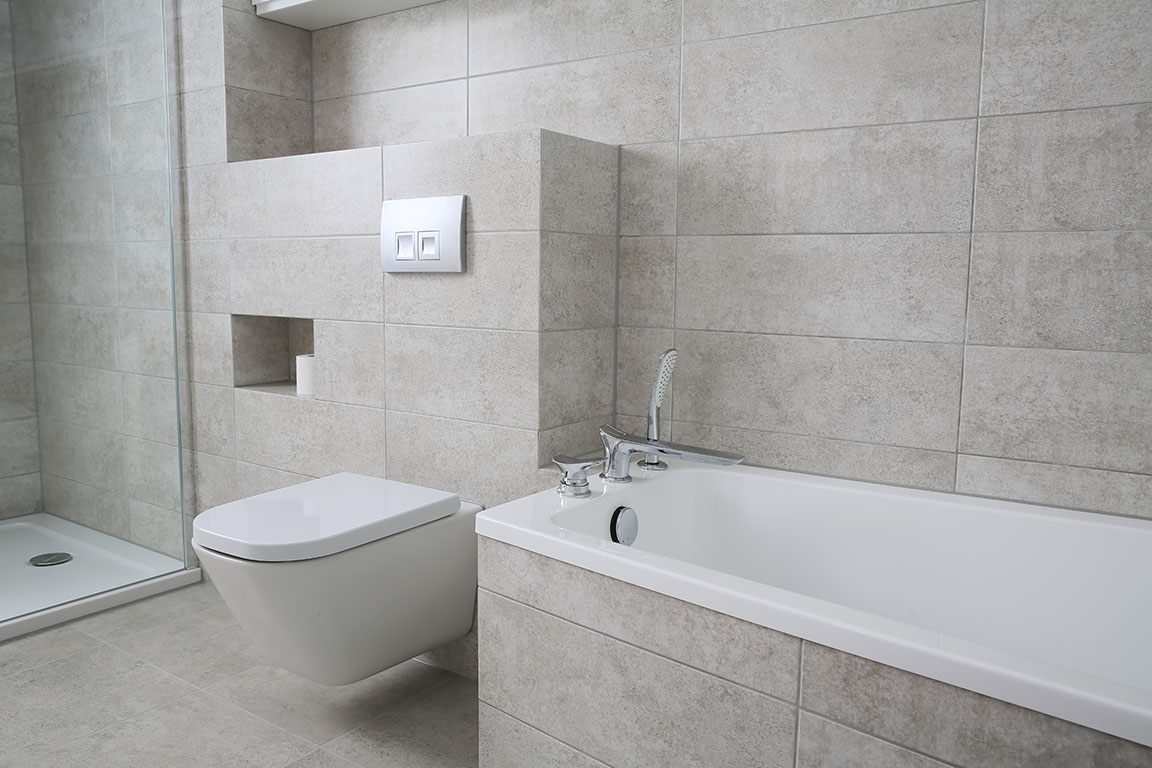
Traditionally tiles have been the most popular product of choice for bathroom walls. Enjoying continued popularity thanks to new on trend designs, technological advances as well as exposure in home interiors titles and on social media sites, tiles continue to take the number one spot.
Tile choice is vast. Materials vary from ceramic and porcelain to natural stone such as marble, onyx, travertine, and limestone. Thanks to digital technology, natural stone effects can now be replicated onto porcelain tiles. Innovation has gone further with digitally printed murals being created using patterned ceramic tiles to give the appearance of wallpaper with none of the issues of waterproofing.
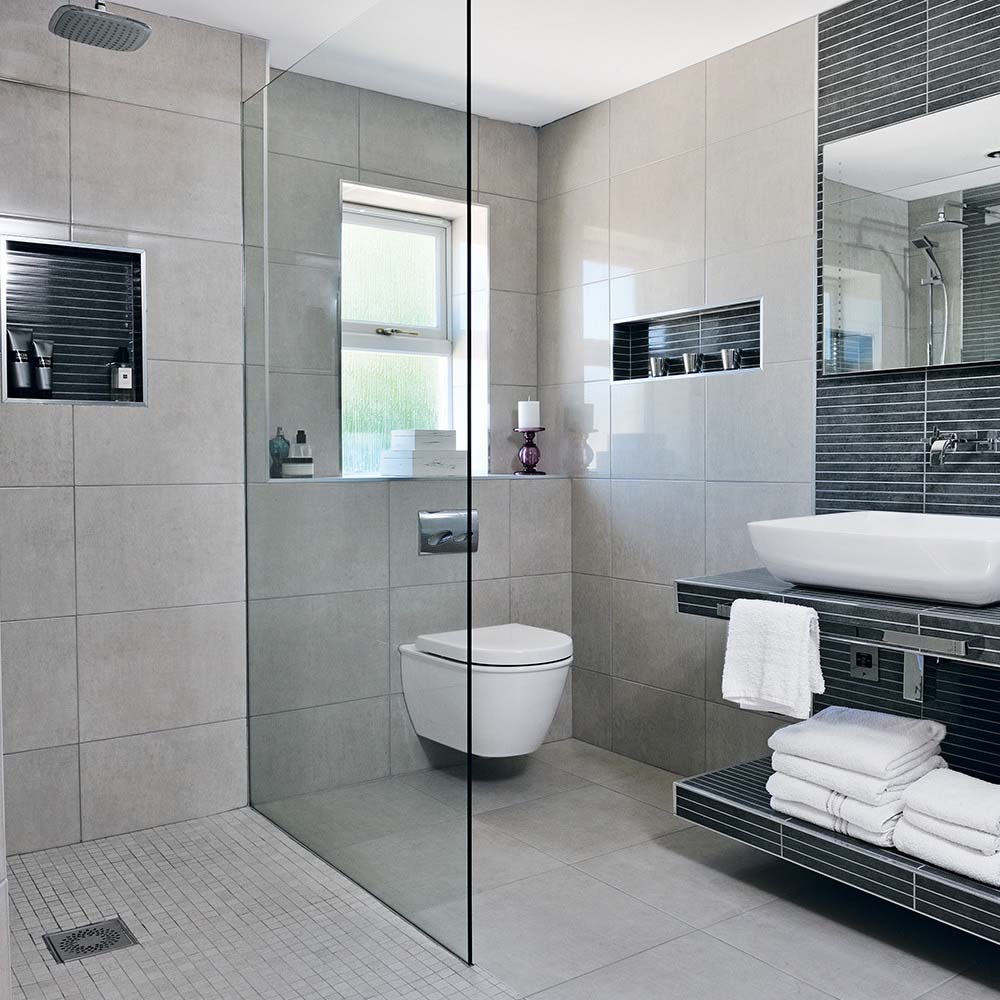
While it’s easy to get carried away with look and design, it’s important to also ensure that your tiles last. Ceramic tiles are less expensive, easy to cut, install and maintain but they are not as hard-wearing or as waterproof as porcelain ones. Natural stone tiles are softer and more porous but require more maintenance and need to be sealed from time to time. More expensive than ceramic tiles, it’s important to work out layout and quantities before beginning to avoid wastage.
Large tiles work well in a smaller bathroom particularly if used from floor to ceiling. Less grouting is required and there are fewer sightlines making the room feel more spacious. Mosaic tiles are popular for creating borders or zoning areas, while textured or patterned tiles work well when combined with plain tiles. Currently on trend are metro-style tiles which can be laid down in several different ways such as herringbone or basketweave. Coloured grout also creates a statement and adds a point of difference, but as with standard grout, it is key to ensure that it has mould resistant properties.
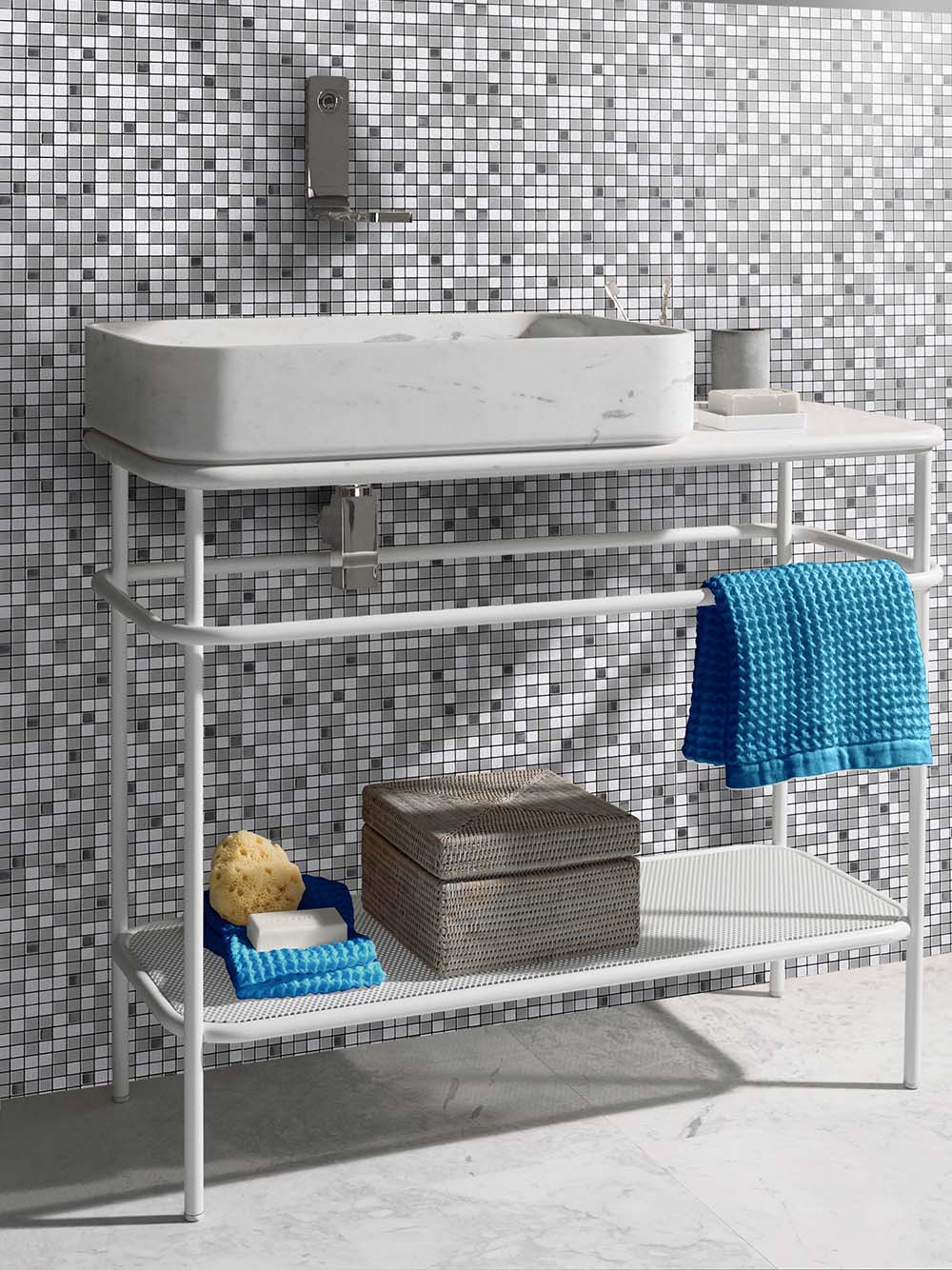
The Compare Network
Copyright – Insight Retail Group Ltd 2025 All rights reserved